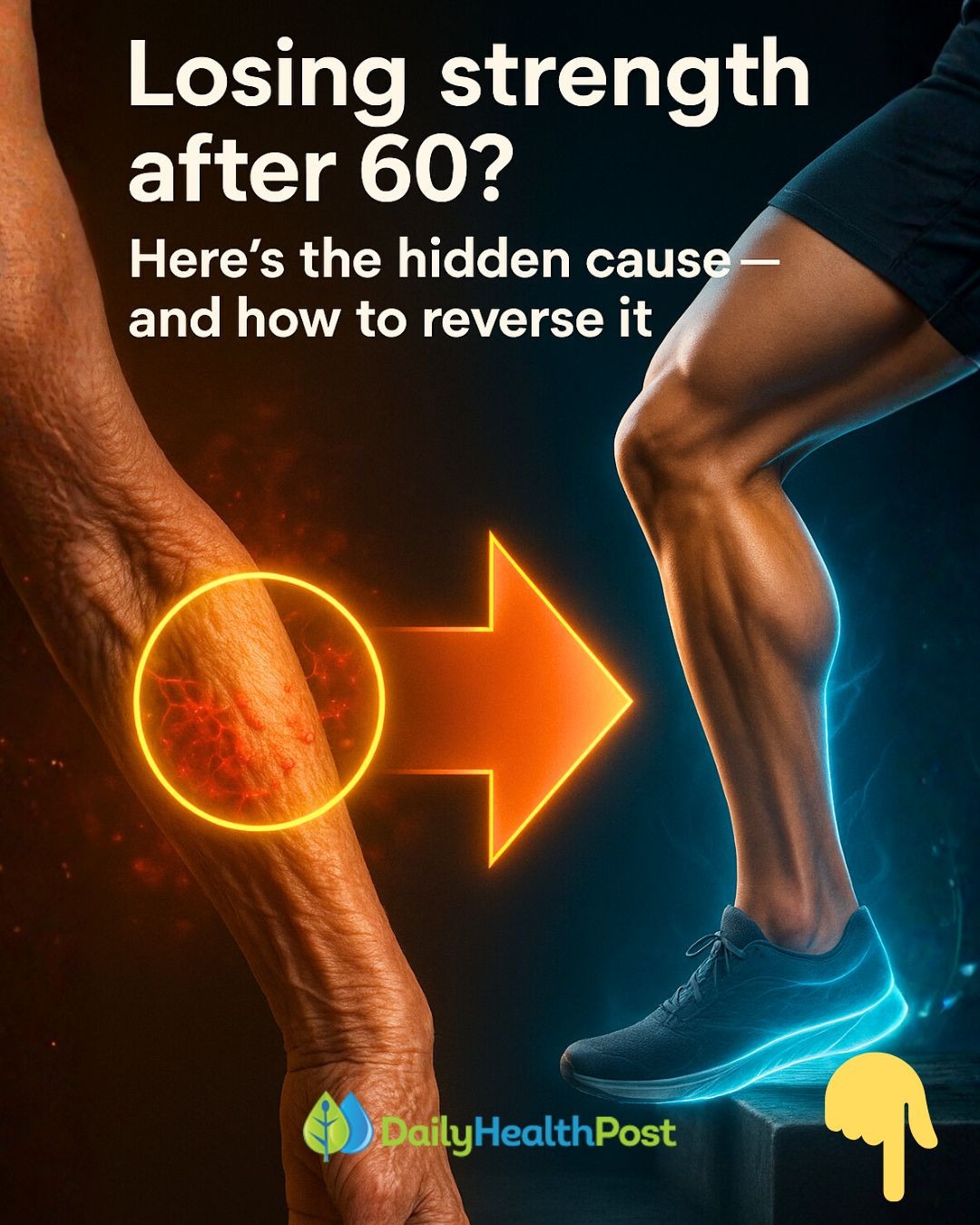3. The 5 Pillars That Truly Rebuild Muscle After 60
- Pillar #1: Activate the Muscle (Even a Little Bit)
Your muscle needs an excuse to stay, and that excuse is called resistance. It’s effort. It’s movement against a force. This doesn’t mean you need to join a gym. It means creating a small challenge for your body to overcome. Examples include: getting up from a chair without using your arms, using a bottle of water as a weight, or pushing firmly against a wall or table. This sends the signal: “I still need this muscle!” This concept is called progressive overload. You start with what you can do, and little by little, you add a bit more. This not only activates muscle but also strengthens bones and joints. - Pillar #2: Nourish the Muscle with Strategy
Protein is the raw material, but the key is how, how much, and when. A crucial amino acid called leucine—found in eggs, meat, yogurt, and soy—acts like the construction foreman, giving the order to build. For this to work, you need to: 1) Eat complete proteins with all essential amino acids. 2) Spread your protein intake throughout the day, rather than saving it all for dinner. 3) Combine it with complex carbohydrates and micronutrients for energy and function. For example, a breakfast of eggs and oatmeal, a lunch of lentils and rice, and a dinner of fish and potatoes. This way, you stimulate muscle synthesis multiple times a day. - Pillar #3: Care for the Nervous Connection
Many people think losing strength is just about losing muscle, but sometimes the problem is in the “wiring.” Your muscles won’t activate properly if your nerves are slow, inflamed, or malnourished. For this, you need key nutrients: magnesium (pumpkin seeds, almonds, spinach), potassium (bananas, potatoes, squash), healthy fats (avocado, walnuts, olive oil), and B-vitamins. These are best found in whole, real foods. If this connection is weak, you might experience tremors, cramps, or clumsiness. This isn’t just weakness; it’s a signaling problem that can be improved with nutrition. - Pillar #4: Calm Chronic Inflammation
Silent, chronic inflammation is like an internal handbrake on your body. It makes muscle repair more difficult and leaves you feeling tired, irritable, and weak. There is no single miracle anti-inflammatory food, but an overall dietary pattern can help put out this internal fire. This includes eating plenty of berries, fatty fish (like salmon and sardines), a wide variety of vegetables, and spices like turmeric (with black pepper). Just as important are lifestyle factors: getting good sleep, moving daily, staying hydrated, and reducing stress. Your body doesn’t just feed on food; it feeds on rest. - Pillar #5: Support Your Bones and Joints
Your muscles don’t exist in a vacuum; they need a strong frame to attach to. If your bones are weak or your joints hurt, you’ll move less, and your muscles will decline faster. This is where calcium and vitamin D come in (from dairy, sardines, and sun exposure). Gentle, weight-bearing movement is also crucial for bone strength. Homemade bone broth can be nutritious and comforting. Remember, movement doesn’t just maintain muscle; it lubricates joints and, by strengthening the muscles around them, can actually reduce joint pain.
4. Your Simple, Practical Weekly Plan to Regain Strength
Theory is one thing, but facing your kitchen after a long day is another. The goal is to make this simple, realistic, and sustainable. Here are three sample daily plans to show you how to combine these principles without obsession or expensive supplements.
- Pillar #3: Care for the Nervous Connection
